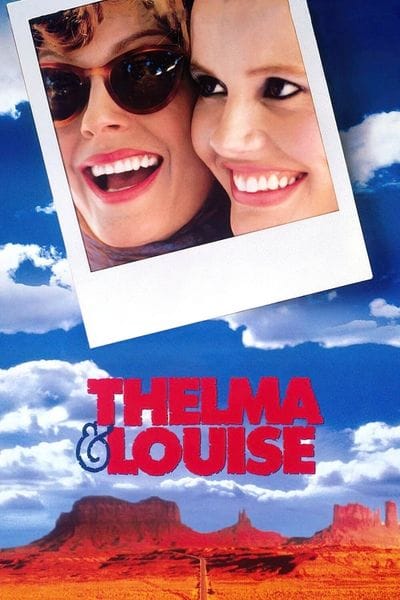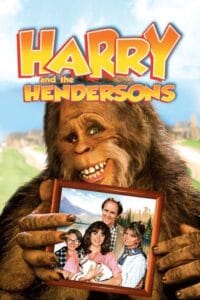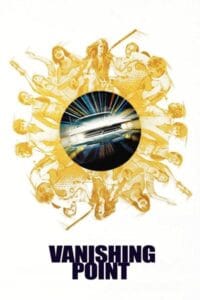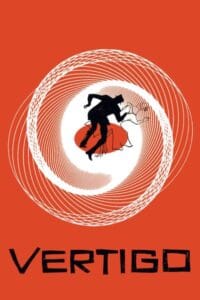The iconic film Thelma and Louise, directed by the visionary Ridley Scott, is renowned not only for its powerful narrative and groundbreaking portrayal of women in cinema but also for its stunning depictions of the American landscape. Set against the backdrop of the open road, the film primarily showcases the vast and varied terrains of California and Utah, transforming these breathtaking locations into vital characters within the story itself. Each scene unfolds against this scenic backdrop, from the rolling hills and expansive deserts to the dramatic cliffs and canyons, accentuating the journey undertaken by the film’s protagonists. The landscapes are not merely backdrops; they reflect the emotional highs and lows of Thelma and Louise’s adventurous escape. This article delves into the specific filming locations, exploring how each site contributes to the film’s unique charm and narrative depth, ultimately enriching the viewer’s experience and leaving a lasting impression of the American West.
City Locations
The primary locations for filming Thelma and Louise included several picturesque cities and towns throughout California and Utah. From the bustling urban environments to the serene countryside, the locations were carefully chosen to reflect the characters’ journey across the American landscape.
California
In California, the film features significant scenes shot in Los Angeles, where the girls embark on their adventurous road trip, beginning their journey of self-discovery. Not far from this urban setting, the breathtaking landscapes of Death Valley National Park provide the perfect backdrop for their escape, showcasing the desolation and freedom associated with their journey.
Utah
As the protagonists venture further, Utah’s dramatic canyons and rock formations come into play. The locations around Moab, a town nestled among stunning natural scenery, include iconic spots such as Arches National Park and Canyonlands National Park. The vibrant reds and oranges of the Utah desert juxtapose beautifully with the emotional highs and lows that Thelma and Louise experience throughout the film.
Location Types
The filmmakers selected diverse location types that not only served as scenic backdrops but also played pivotal roles in highlighting the characters’ growth and challenges.
NatureScapes
The rugged beauty of nature is prevalent throughout the film, contributing to the almost mythical quality of the protagonists’ journey. Scenes shot in nature scapes evoke a sense of liberation and adventure, underscoring the wilderness that mirrors the characters’ internal struggles and longing for freedom.
American
Set against quintessential American landscapes, the film captures the essence of road trip culture in the United States. From diners to gas stations, the locations represent familiar stops on the journey of life and serve as crucial moments of reflection for the characters.
House
Intimate house settings are strategically placed within the film to provide contrast to the sweeping open roads. The domestic spaces reveal the characters’ backgrounds and reveal the societal limitations they seek to escape.
Automotive
Automobiles play a vital role in Thelma and Louise, representing both a means of escape and an emblem of freedom. The classic convertible Ford Thunderbird becomes a symbol of their journey, reflecting their desire to break free from societal constraints.
Clubs/Bars
The film also features bars and clubs that serve as pivotal points for character interaction. These establishments provide a stark contrast to the serene outdoor landscapes, showcasing the chaos of their lives and the pivotal moments where they make decisions that alter their destinies.
Location Styles
The stylistic choices surrounding the film’s locations also contribute to its Americana themes.
Americana/Anywhere America
The locations are emblematic of Americana, representing the dreams and aspirations of everyday Americans. Filming in locations that resonate with viewers allows for a connection that transcends geographical boundaries, making the experiences of Thelma and Louise relatable to many.
Classic Car
The choice of a classic car as a central motif throughout the film enhances its nostalgic Americana vibe. The vehicle becomes not only a means of travel but also a representation of freedom, rebellion, and the embrace of a carefree spirit.
Convertible
The use of a convertible allows the characters to experience the open skies and freedom, highlighting the exhilarating nature of their journey. The physical act of riding in the convertible mirrors their emotional journey toward self-actualization and independence.
Racing
Throughout the film, the sense of urgency is mirrored in the fast-paced scenes involving the car. The racing element adds a dynamic tension to the storyline, reflecting the women’s need to escape from their pasts and current realities.
About Thelma and Louise
Released in 1991, Thelma and Louise quickly became a cultural touchstone, garnering critical acclaim and prompting widespread discussions on gender roles and representation within the film industry. The story follows two women, Thelma (Geena Davis), a naive waitress, and Louise (Susan Sarandon), a strong-willed diner waitress, who embark on a weekend getaway that unexpectedly spirals into a life-altering journey filled with adventure and peril.
As they navigate a series of challenges, including unexpected romance, betrayal by those they trust, and encounters with law enforcement, their bond deepens and evolves in profound ways. The film not only highlights their individual growth but also showcases powerful themes of friendship, empowerment, and defiance against societal norms that often restrict women’s freedom. With its iconic road trip narrative, Thelma and Louise continues to resonate with audiences today, serving as a bold statement on female agency and solidarity in a world that often overlooks women’s stories.
Thelma and Louise Locations
The filming locations not only provide a stunning visual narrative but also play a significant role in the unfolding story. The choice of settings, from the highways of California to the canyons of Utah, enrich the characters’ emotional arcs. Each locale contributes to the mood, often reflecting the internal struggles faced by the protagonists.
Notable Locations:
- Thelma’s House – The film opens in a modest suburban home, illustrating Thelma’s constrained existence.
- Diner Scene – A roadside diner serves as a crucial space for character development and socio-economic observation, contrasting Thelma’s dreams with her reality.
- Valley of the Gods – This breathtaking location becomes the backdrop for pivotal moments in the film, representing both isolation and freedom.
Preparing for the weekend scene in Thelma and Louise
The film’s opening scenes set a compelling foundation for the adventure that follows, vividly illustrating the mundane and often restrictive lives of Thelma and Louise. As they navigate their daily routines, viewers gain insight into their individual struggles and desires, creating a relatable backdrop. In a passionate bid for liberation, Thelma meticulously prepares for their long-awaited weekend getaway, her heart racing with excitement, yet tinged with apprehension about leaving behind the familiar confines of her predictable daily life. Each item she packs serves as a symbol of her yearning for freedom and adventure. The planning process is filled with a thrilling mixture of exhilaration and trepidation, as both women share laughter and moments of doubt, ultimately propelling them into a journey that is destined to be filled with unforeseen twists and life-altering experiences.
Louise kills Harlan scene in Thelma and Louise
One of the film’s most pivotal moments occurs when Louise confronts Harlan, a man who attempts to assault her friend Thelma. In a gripping scene that blends desperation and courage, Louise bravely acts to protect her friend, demonstrating the fierce loyalty that defines their bond. This intense confrontation leads to an irreversible decision, transforming their carefree road trip into a high-stakes flight from the law. The weight of this choice hangs over them, as they navigate the consequences of their actions. This scene not only highlights the immediate danger they face but also underscores the film’s deeper themes of friendship, sacrifice, and the lengths one will go to protect those they love, showcasing the profound connection between the two characters as they face the chaos that follows.
Louise turns down her boyfriend scene in Thelma and Louise
Contrasting with her multifaceted duties as a caretaker and girlfriend, Louise’s bold decision to reject her boyfriend symbolizes her deeper struggle for independence and self-identity. This pivotal scene serves as a critical juncture in her character arc, illustrating not only her growth but also her courageous determination to forge her own path outside of societal expectations and traditional roles. It highlights the internal conflict she faces between her obligations to others and her desire for personal freedom. The moment encapsulates the film’s overarching message of self-discovery and empowerment, demonstrating that true fulfillment comes from embracing one’s individuality and breaking free from constraints that hinder personal growth. Through this choice, Louise embarks on a transformative journey, paving the way for a future defined by her own values and aspirations.
The women confront the truck driver scene in Thelma and Louise
The encounter with the truck driver is another defining moment, highlighting the themes of misogyny and the fight against objectification. The women’s bold confrontation marks a turning point, symbolising their reclaiming of power in a hostile environment. This scene serves to challenge conventional gender roles and societal norms, showcasing their transformation from passive victims to active participants.
Thelma invites J.D. to the motel scene in Thelma and Louise
The spontaneity of inviting J.D., a charming drifter, to share their motel room represents uncharted territory for Thelma and Louise. The moment marks a departure from their mundane lives, ultimately leading to unexpected consequences. This scene also reflects the women’s desire for adventure and living life on their own terms.
Thelma robs a store scene in Thelma and Louise
In a moment of desperation, Thelma takes on the role of a criminal, robbing a convenience store to finance their journey. This scene showcases her transformation from a meek and subservient housewife to an empowered woman willing to take risks for her freedom. It also serves as a commentary on societal pressures and the lengths individuals may go to escape from them.
Conclusion
Thelma and Louise remains a timeless classic, showcasing themes of female empowerment, friendship, and rebellion against societal norms. Its unique blend of Americana aesthetics, captivating storytelling, and compelling characters continue to make it a beloved film among audiences worldwide.
Overall, the film’s locations serve as more than just backdrops; they play an integral role in crafting a rich narrative that resonates with viewers. From Thelma’s suburban home to the breathtaking landscapes of Utah, each setting contributes to the film’s themes and the characters’ personal journeys. As audiences continue to revisit this iconic film, its messages of self-discovery and empowerment remain as relevant today as they were in 1991. So if you haven’t yet experienced the epic journey of Thelma and Louise, grab some popcorn and buckle up for a wild ride that will leave you feeling inspired and empowered.







